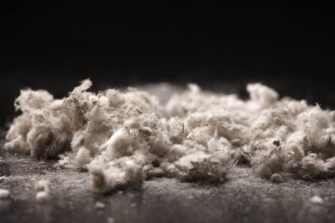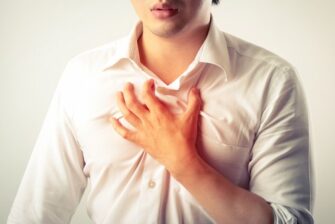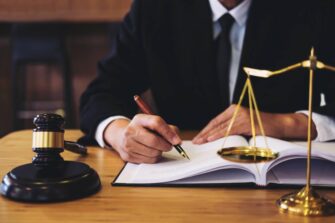Diseases Related to 9/11 First Responders and the Ongoing Impact
The devastating terrorist attacks on September 11, 2001, not only claimed the lives of thousands of innocent people but also left a lasting impact on the health of the brave first responders who risked their lives to save others. Recently, the New York City Fire Department (FDNY) announced a tragic milestone – the number of first responders who have died from illnesses related to 9/11 has reached the same number as those who lost their lives on the day of the attacks. This somber revelation serves as a stark reminder of the long-term health consequences faced by these heroic individuals.
The FDNY shared the heartbreaking news via an Instagram post by Fire Commissioner Laura Kavanagh (@fdnyfc). She revealed that two more first responders had succumbed to 9/11-related illnesses, bringing the death toll to 343. EMT Hilda Vannata lost her battle with cancer, while retired firefighter Robert Fulco died from pulmonary fibrosis. Both had spent significant time working in the rescue and recovery efforts at the World Trade Center site.
Commissioner Kavanagh expressed deep sorrow for the families of these fallen heroes and emphasized the responsibility the FDNY has towards its colleagues beyond the events of September 11th. She acknowledged that the toll of these illnesses on FDNY members continues to rise, with approximately 11,000 individuals suffering from World Trade Center (WTC)-)-related diseases, including 3,500 with cancer. The commissioner noted, ‘Our responsibility to our FDNY colleagues extends far beyond what we asked of them on September 11th and in the days and months that followed during rescue and recovery.’
The legacy of honor and promise created for the fallen heroes drives the FDNY’s advocacy for survivors. Commissioner Kavanagh vowed to continue pushing until all members receive the care they deserve for the rest of their lives. The FDNY’s dedication to their service and sacrifice is unwavering, and their promise to never forget them stands strong.
FDNY Fire Commissioner Kavanaugh closed her Instagram post by noting, ‘343 of our heroes lost in one day and today, 343 more. The FDNY will never forget them. This is our legacy. This is our promise.’ The diseases related to 9/11 first responders are a harsh reality that has unfolded in the aftermath of the terrorist attacks. The toll on the health and lives of these brave individuals is a constant reminder of the sacrifices made that day and in the days and months that followed. We must continue to support and advocate for the survivors, ensuring they receive the care they deserve. The legacy of the fallen heroes must be honored by fulfilling the promise of lifelong care and support for those who risked everything to save others on that fateful day.
If you or a loved one have been affected by the repercussions of diseases or health concerns related to 9/11, contact Belluck & Fox to discuss your options. Our skilled attorneys can help you in receiving the compensation and care that you need.
Sources:
Instagram: Laura Kavanaugh @fdfny
BBC News: https://www.bbc.com/news/
People Magazine: https://people.com/fdny-first-
Need Know Sept 11 Asbestos Exposure
On Sept. 11, 2001, our country was forever changed.
When terrorists attacked the World Trade Center in Lower Manhattan, more than 2,500 innocent people died.
Children lost parents.
Families lost sons and daughters.
As a country, we mourned these great losses.
But we did not let them break our spirit.
Stories of triumph emerged from the tragedy. Firefighters and police rushing selflessly into the Twin Towers to save anyone they could. Everyday people sacrificing themselves to help co-workers and strangers escape the collapse. Exhausted and sometimes injured rescue workers searching the rubble around the clock to pull out survivors and give closure to families.
We will never forget the sacrifices that were made that day and for the days and weeks to follow. For many of us, the images of brave rescue workers and survivors covered in dust and soot are forever burned into our memory.
Unfortunately, these images also serve as a stark reminder of the lingering threat that many survivors face:
More than 400,000 people were exposed to asbestos and other toxic dust as a result of the World Trade Center attacks.
Now, sixteen years later, survivors are being diagnosed with asbestos lung diseases such as mesothelioma, lung cancer, and asbestosis.
Compensation is available for those who are coping with serious diseases as a result of the toxic asbestos dust released after the Sept. 11 attacks.
Contact us today to learn what types of financial assistance are available for you and your family.
What Is Asbestos and How Much Was in the World Trade Center?

Asbestos is a naturally occurring mineral that was commonly used in construction and industrial products until the 1980s. It is a human carcinogen, meaning it is shown to cause cancer such as malignant mesothelioma.
Researchers estimate that the World Trade Center’s North Tower contained as much as 400 tons of asbestos. (The builders of the Twin Towers stopped using asbestos insulation and other materials by the time they constructed the South Tower.)
When the Twin Towers collapsed, they created a massive cloud of dust filled with asbestos fibers and other toxins. Even after the initial dust cloud settled, microscopic asbestos fibers remained a serious risk to anyone who inhaled or ingested them.
Who Could Be at Risk of Asbestos Diseases After 9/11?
There is no safe level of asbestos exposure. Anyone who was in the vicinity of Ground Zero may have breathed in or ingested the dangerous fibers. This includes:
- Rescue workers such as firefighters, police officers, and paramedics
- Clean-up crews
- Construction workers
- Survivors
- Bystanders
- Residents of Lower Manhattan
In addition, family members of rescue workers and survivors may have been exposed to asbestos that was carried home on clothing or skin. Anyone who was exposed to asbestos on or after Sept. 11 should be aware of its effects and know what symptoms to look for.
What Are the Symptoms of Asbestos Disease?
 Asbestos diseases have a long latency period, which means they may not develop until decades after a person was exposed to the dangerous fibers. It is crucial that Sept. 11 rescue workers, survivors, and others who may have been exposed watch for signs and symptoms of asbestos diseases, including:
Asbestos diseases have a long latency period, which means they may not develop until decades after a person was exposed to the dangerous fibers. It is crucial that Sept. 11 rescue workers, survivors, and others who may have been exposed watch for signs and symptoms of asbestos diseases, including:
- Shortness of breath
- Painful cough or coughing up blood
- Fluid build-up in the chest or abdomen
- Pain in the chest or abdomen
- Lumps under the skin on the chest or in the abdomen
- Swelling in the neck or face
- Loss of appetite or weight loss
- Difficulty swallowing
- Fatigue
- Fever
- Hoarseness
If you experience any of these symptoms, contact your doctor and share your history of asbestos exposure. Early diagnosis of asbestos diseases leads to more effective treatment options.
Even if you are not experiencing symptoms, you may want to talk to your doctor about the best ways to monitor your health. Your doctor may recommend annual chest X-rays or other tests to catch any signs of disease as early as possible.
What Type of Help Is Available for 9/11 Victims?

Your options for pursuing compensation and assistance for a 9/11-related cancer or illness will depend on your circumstances. For example:
The government has set aside billions of dollars as part of the September 11th Victim Compensation Fund to compensate those who were harmed or lost a loved one during the attacks or the clean-up efforts.
The fund originally operated until 2004, but it was reactivated as part of the James Zadroga 9/11 Health and Compensation Act of 2010, also known as the Zadroga Act. Recognizing the ongoing health effects of Sept. 11, the federal government has currently reauthorized the Victim Compensation Fund (VCF) through 2020. Thousands of claims are paid every year, with more than $2.8 billion being paid to victims and families so far.
The World Trade Center (WTC) Health Program is a separate government program that provides medical monitoring and treatment for injuries and illnesses related to 9/11 exposure. Also set up as part of the Zadroga Act, the WTC Health Program is available for people who “were present in the dust or dust cloud on 9/11 or who worked, resided, or attended school, childcare, or adult daycare in the New York City disaster area for a period of time on 9/11 and/or during the following months.”
The State of New York has also extended workers’ compensation benefits to WTC workers (including volunteers). If you or a loved one is suffering from an illness related to work in 9/11 rescue, recovery, or clean-up efforts, you may be eligible to collect these benefits.
Thousands of people have filed personal injury and wrongful death claims against contractors, building owners, and others responsible for the clean-up of 9/11 debris. Rescue workers and others have been able to recover hundreds of millions of dollars in settlements.
If you have been diagnosed with a 9/11-related cancer or other asbestos disease, you need an experienced New York asbestos lawyer on your side to help you navigate the complicated claims process.
Our nationally recognized attorneys have secured more than $1 billion for asbestos victims and their families, and we stand ready to fight for you now.
We have represented many clients who were expose to asbestos on 9/11. And Joe Belluck, our founding partner, worked for Trial Lawyers Care on behalf of 9/11 victims.
Schedule a free consultation today to discuss your options for pursuing compensation, and let our dedicated asbestos attorneys at Belluck & Fox, LLP take the pressure off you so you can focus on what’s important ─ your health. We have locations at New York City, Woodstock, Rochester and Albany.